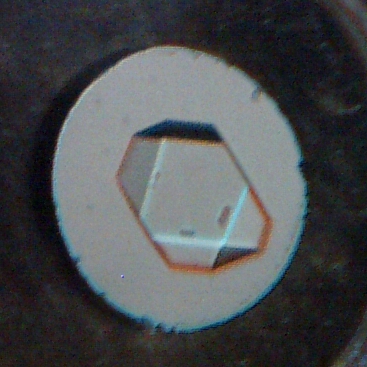Disclaimer: machine translated by DeepL which may contain errors.
The Rigakubu News
The Rigakubu News July 2025
Advancing Science >
~ Message from a graduate student~.
In Search of New Ice Crystal Structures in the Laboratory
 |
| Hiroki Kobayashi |
| Department of Chemistry 2nd Year Doctoral Student |
| Place of birth Tokyo, Japan |
| Department of Chemistry Faculty of Science, The University of Tokyo |
Polymorphs are crystals that have a common chemical composition but different structures. It is common for crystal structures to change when temperature and pressure are changed. For example, it is well known that graphite and diamond are both polymorphs of carbon. However, ice, the subject of my research, has an unparalleled structural diversity, with more than 20 known crystal structures. These are numbered by Roman numerals, with ice I being the snow crystal ice, and II, ..., XX, in the order of discovery.
The history of ice discoveries shows that multiple polymorphs have been discovered from a single idea, including the method of making high-pressure ice from an aqueous solution with a small amount of acid and then cooling it (ice XIII & XIV, 2006/ice XV, 2009/ice XIX, 2021), the method of making clathrate hydrates (ice XIII & XIV, 2006/ice XV, 2009/ice XIX, 2021), and the method of making clathrate hydrates from aqueous solutions with a small amount of acid and then cooling them (ice XII, 2021). 2021), extracting only guest molecules from clathrate hydrates (crystals in which guest molecules are incorporated into the cage structure of water molecules) (ice XVI, 2014/ice XVII, 2016/ice Ic, 2020), and creating a state in which hydrogen atoms are violently moving around in the crystal under high temperature and high pressure (ice XVII (ice XVIII, 2018/ice XX, 2021), and the method of creating a state in which hydrogen atoms move violently in a crystal at high temperature and high pressure (ice XVIII, 2018/ice XX, 2021). However, it seems that these methods have been "investigated" by groups from all over the world. It may be time for a completely new kind of idea.
The number of ice polymorphs that actually exist is probably much higher than 20. The leading evidence for this is computer experiments. So far, countless unknown ice polymorphs have been predicted from theoretical calculations. Of course, some of them may not exist in reality, but not all of them are likely to be so. For example, in March 2025, it was reported that 'plastic ice VII' (a state in which water molecules dynamically rotate while forming crystals), which had long been predicted by theoretical calculations, was experimentally observed at high temperature and high pressure. This is yet another proof that the theoretical calculations were not wrong, but that the experiments were just not up to par. The search for new ice crystals in the laboratory leads us to the big question of "how to understand the substance of water in depth.
I use X-ray and neutron diffraction techniques to study polymorphs that appear at high pressures, such as GPa (gigapascals). I have been conducting experiments at large facilities such as J-PARC, KEK, and SPring-8*, and from February 2025 I will be traveling to Paris, France, to continue my research. In Japan, I have been conducting experiments to search for new ice polymorphs, but in France, I am planning to reexamine known high-pressure ice polymorphs. For example, the ice XV polymorph was discovered in 2009, but its structure could not be reproduced by theoretical calculations. I am considering approaching this problem by focusing on some "unusual behaviors" peculiar to ice XV, which are not found in other polymorphs, and by carefully investigating them experimentally.
Chemistry is often associated with the creation of new substances, and I may seem to be an eccentric person studying H2O. In fact, in the field of ice research, the boundary between physics and chemistry is blurred and can be extended to earth and planetary sciences. The fact that researchers from all over the world with diverse backgrounds and experiences can exchange ideas and deepen their research makes the study of water, a universal and simple substance, interesting.

(Single crystal of ice VI prepared at 1 GPa and room temperature using a high-pressure apparatus called a sapphire anvil cell. The crystals fabricated in Paris will be transported to the Institut Laue Langevin, a research reactor in Grenoble, France, where they will be irradiated with particle beams called neutron beams to study the crystal structure in detail.


